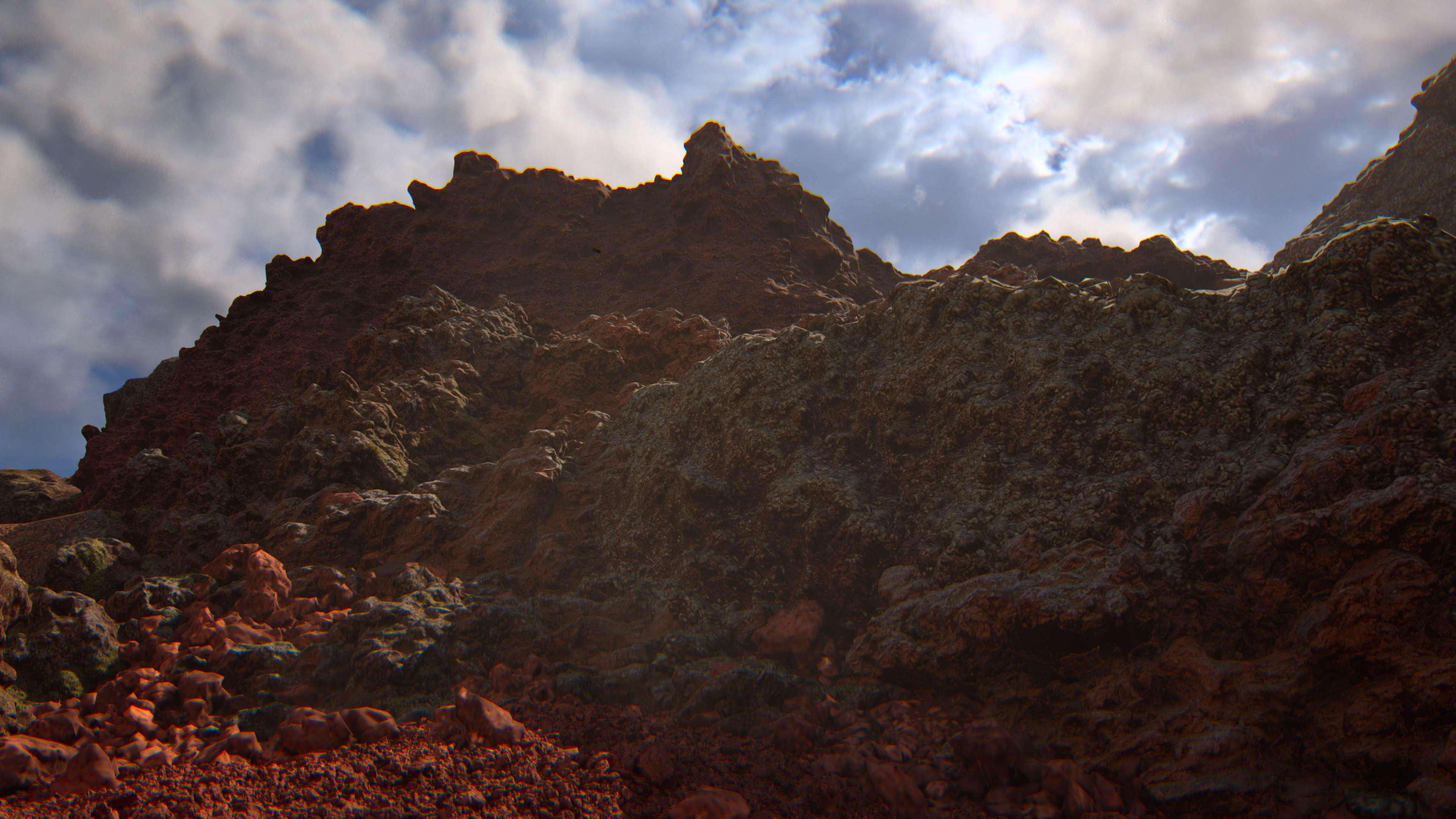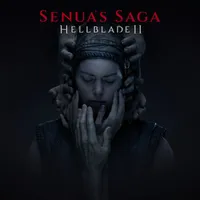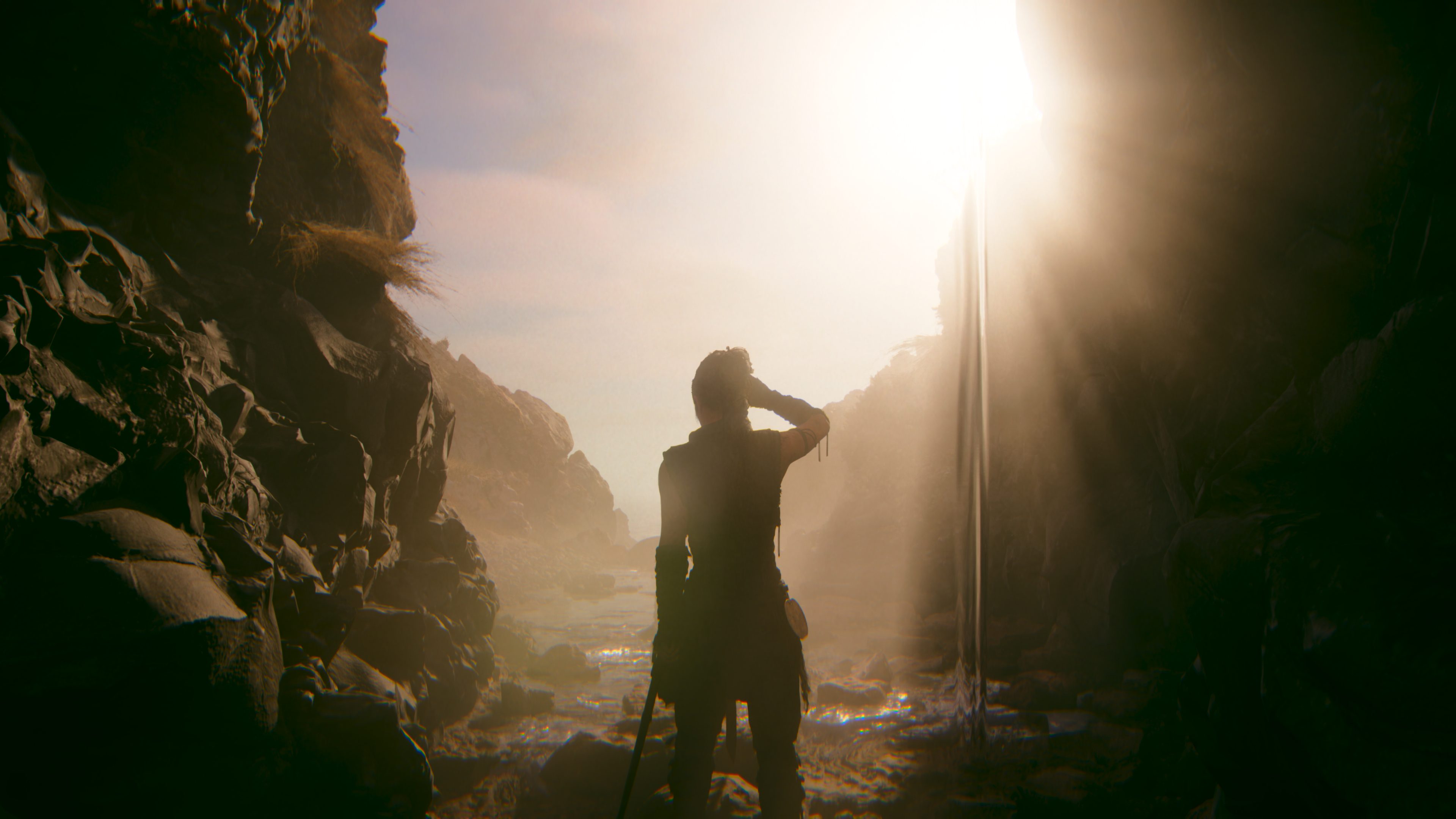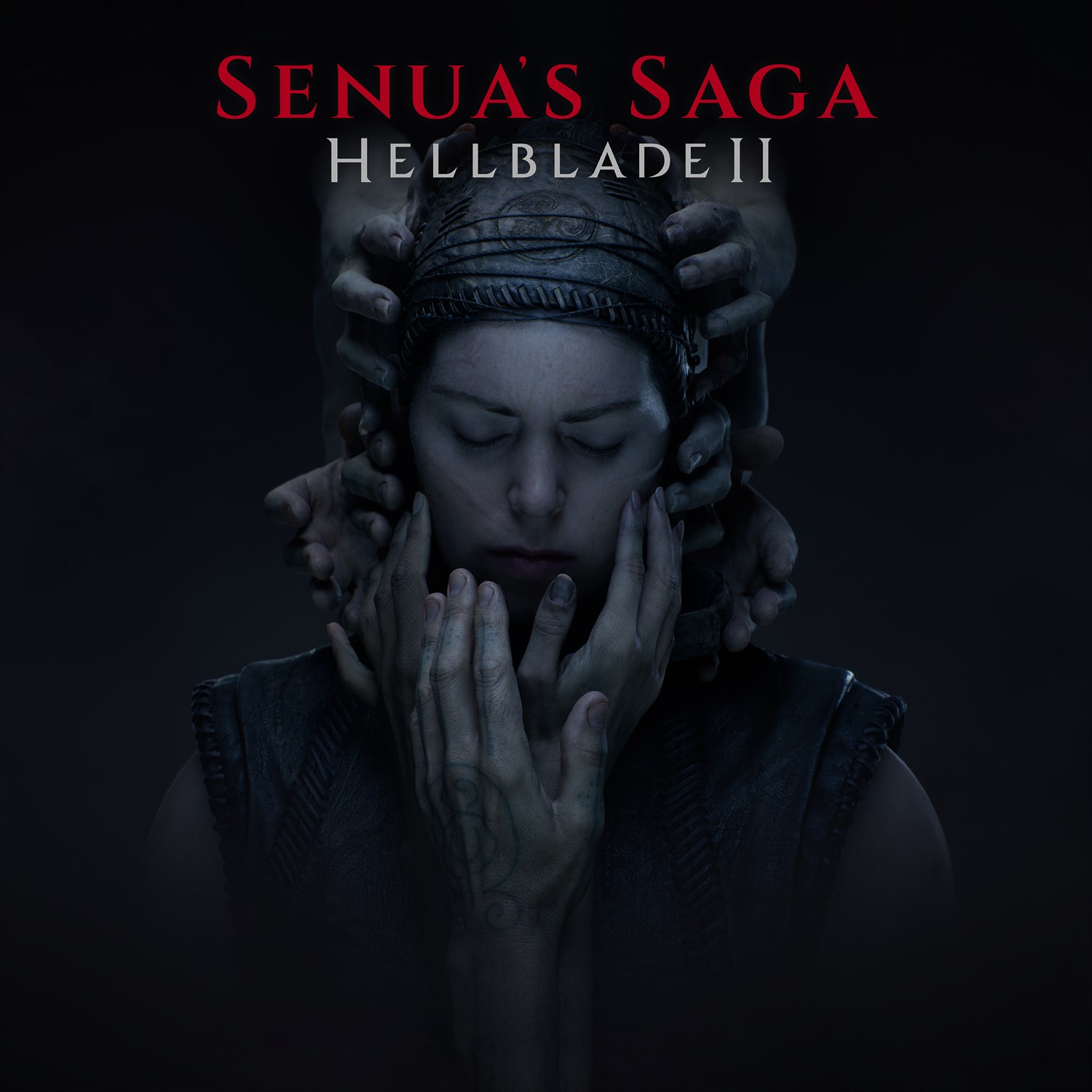Windows Central Verdict
A game like Senua's Saga: Hellblade II can only be the result of years of passion and talent, captivating you with its unbelievable visuals, impeccable audio design, and powerful thought-provoking narrative. It's a veritable masterpiece, but it's just shy of perfection thanks to an average PC port and some minor criticisms.
Pros
- +
Astonishing graphics, with gorgeous environments and stunning cinematic events
- +
Unbelievable binaural audio that is crisp, detailed, and layered
- +
Deep, emotional story that blends mythology and mental health
- +
Incredibly written characters with astonishing performances all around
Cons
- -
The world can feel too static at times, with little interaction
- -
The PC port has some performance and control issues
Why you can trust Windows Central
It has been nearly seven years since the release of Hellblade: Senua's Sacrifice, a stunning narrative-adventure game that admittedly never pulled itself out of the "niche" category. Ever since, developer Ninja Theory has been working to elevate its talents at every level, aiming to make the long-awaited Hellblade sequel one of the greatest follow-ups in video game history. Now, it's finally here... But was the next chapter of Senua's story really worth the wait?
I was one of the first in the world to play Senua's Saga: Hellblade II from start to finish, and I don't foresee myself forgetting this game even years down the line. "Spectacular" doesn't begin to adequately describe the art that Ninja Theory has created with Hellblade 2 — "masterpiece" strikes much closer to the heart of the matter. I have a lot to say about this incredible, powerful, and incomparably beautiful journey into Norse mythology and mental health, so strap in for my spoiler-free review of Senua's Saga: Hellblade II.
This review was made possible with a review code provided by Xbox Game Studios. The company did not see the contents of the review before publishing.
What is Senua's Saga: Hellblade II?
• Price: $49.99 at Amazon | Best Buy | GameStop
• Release date: May 21, 2024
• Developer: Ninja Theory
• Publisher: Xbox Game Studios
• Genre: Action-adventure
• Players: Single-player
• Install size: ~41GB
• Playtime: 8+ hours
• Platforms: Xbox Series X|S, Windows PC (Microsoft Store, Steam)
• Xbox Game Pass: Yes (console, PC, cloud)
• Reviewed on: Xbox Series X
Senua's Saga: Hellblade II is the long-awaited sequel to Hellblade: Senua's Sacrifice (which was released in Aug. 2017). The game has been in development for over six years by a team of approximately 80 people at Ninja Theory, a studio under the Xbox Game Studios umbrella. Like its predecessor, Senua's Saga: Hellblade II is a narrative-driven action-adventure game that blends myth with real-world psychosis, a mental health condition that affects many people.
Ninja Theory worked with psychosis experts and those with lived psychosis experiences to create a realistic depiction of the condition, and combined that with an in-depth look into Norse mythology. The game's next-level visuals and art design is only possible through on-location photogrammetry in Iceland, unbelievably detailed performance motion capture, and a huge array of authentic props digitally scanned into the game.
Hellblade 2 continues the story of Senua, following her after her harrowing adventure into Hel in search of a way to bring her deceased lover back. You can read our in-depth recap of the story of Hellblade: Senua's Sacrifice for more information. Senua's Saga: Hellblade II released on May 21, 2024 for Xbox Series X|S, Windows PC (Microsoft Store and Steam), Xbox and PC Game Pass, and Xbox Cloud Gaming.
You can buy Senua's Saga: Hellblade II for $49.99 at Amazon (Xbox & PC).
Senua's Saga: Hellblade II — $49.99 at Amazon | Best Buy | GameStop
The next chapter of Senua's story, Hellblade 2 is a masterfully crafted video game with amazing graphics, audio design, character performances, and storytelling. For fans of the previous game or narrative-driven adventures, Senua's Saga: Hellblade II can't be missed.
Hellblade 2 review: Performance and stability
Performance highlights
- Senua's Saga: Hellblade II absolutely prioritizes visual fidelity over performance, and it's not to its detriment.
- Despite running at 30 FPS, the game feels very smooth and stable on Xbox Series X, with hardly any bugs or glitches during my playthrough.
- Hellblade 2 seems polished and well optimized, and its performance is more than good enough for a slower-paced, narrative-driven game like this.
Jumping ahead of the inevitable mob, Senua's Saga: Hellblade II does run at 30 frames-per-second (FPS) on Xbox Series X (and basically every other device it's available on). However, this isn't a bad thing. There's a very big difference between a poor 30 FPS and a well-optimized 30 FPS, and Hellblade 2 firmly rests in the latter group. Ninja Theory clearly prioritized visual and audio presentation at every step of Hellblade 2's development, and the end result is positively stunning.
All the latest news, reviews, and guides for Windows and Xbox diehards.
I played the game on Xbox Series X, and the framerate felt rock solid my entire playthrough. Gameplay is smooth and just the right amount of responsive for a slower, narrative-driven title. Even during fast-paced combat sections, I never struggled to stay competitive and the framerate never suffered. All around, it seems like Ninja Theory did an excellent job optimizing Hellblade 2, although I can't comment on Xbox Series S performance (and I'll discuss PC and handheld performance further down).
When it comes to bugs, Senua's Saga: Hellblade II wasn't entirely flawless, but it's well within what I'd consider acceptable. I saw brief moments of flickering textures or texture pop-in a handful of times, and I had one instance where an enemy's model glitched and Senua ended up stabbing the air during her finishing move. Other than that, Hellblade 2 also feels incredibly polished, which is unfortunately not a given for a new game release in 2024.
Hellblade 2 review: Visuals and audio
Visuals highlights
- Senua's Saga: Hellblade II is genuinely the most visually impressive video game I've ever played.
- Even separate from the photorealistic environments and set pieces, there are some absolutely gorgeous animations and cinematics all throughout.
- The 3D binaural audio is also unbelievably good, and begs for you to play the game with a good pair of headphones.
The word "immersion" doesn't often find its way into my gaming vocabulary, but it's impossible to avoid when attempting to describe Senua's Saga: Hellblade II. From the moment you start the game, you're instantly transported into this universe, encapsulated entirely by the breathtaking art design and the masterful narration. I'll get to that latter part in the next section, but for now let's focus on new bar Hellblade 2 sets for video game graphics and audio design, with Unreal Engine 5 as the canvas.
Senua's Saga: Hellblade II is set in 10th Century Iceland, and Ninja Theory actually visited the region and used photogrammetry to accurately capture the colors, textures, and topography of Iceland. The result is the most realistic world I have ever experienced in a video game, with absolutely zero hint of the smoothed-over edges in other games that subconsciously remind you this world was crafted by human hands instead of nature.
Every individual element is wonderfully recreated in-game, including the ground, the surrounding flora, the distant mountains, the expansive skies, the jagged cliff faces and cascading waterfalls, the swaying ponds and flowing rivers; even the man-made looks as if it was plucked straight from the real world, with Ninja Theory faithfully recreating everything from totems to clothing in-house and then digitally scanning them into the game.
The price of such staggering visual fidelity, though, seems to be the ability to interact with the world. At times, Senua moves through the world like a phantom, a world which has already died — skies frozen in time, plants made still bereft of wind, and the reassuring presence of fauna rendered nothing more than a memory. When this happens, the world is impossibly beautiful but trapped within its perfection, like a painting passionately created to capture a moment. Senua is part of that painting, a thing of substance able to touch the stone and feel the ground, but not able to affect it.
When movement is introduced, it is spectacular. Storms buffet the world with curtains of heavy rain and vicious winds that snap and slice; fog blankets the earth like molasses, swirling lazily around the feet of passersby; water in all its forms runs in rivulets across stone, pools on the ground, rebels against the world with thunderous waves, gently refracts the light of the setting sun. Through Senua's eyes you also see an entirely different world, one that bends and twists, flips and spins, and is assaulted by otherworldly lights, symbols, and effects.
The full picture is one of sleight inconsistency. Senua's Saga: Hellblade II always looks amazing, but how alive it feels shifts from moment to moment. Senua can wade through a pool without getting wet and leaves no footprints where she walks, but then every intricate part of her clothing is cast aloft by the wind and streaked by the rain. Senua can glide around bushes and stones like she is blocked by an invisible wall, but then can navigate the twisting crevices of a cave with such believability that it makes you wonder if you can reach through the screen and feel the damp stone with your own fingers.
An element that isn't lacking in dynamism at all, though, is the audio. The 3D binaural audio tech we witnessed in the first game is better than ever, an audio adventure that demands you experience it through the best Xbox headset you can obtain. As you explore this alluring world you are surrounded by its sounds — you can hear running water, the sound of the wind whistling through the cliffs, Senua's footsteps changing from material to material.
The voices in Senua's head are the most impressive, though, panning all around you to create an enveloping effect. Vocal performances are phenomenal as I'll get into, and Ninja Theory seems to have utterly mastered the art of using different effects and tricks to squeeze every drop of potential out of every sound. Seriously, if you're able, to play this game with headphones on.









Hellblade 2 review: Narrative and writing
Narrative highlights
- Hellblade 2 is set shortly after the events of the first game, beginning with Senua's journey to Iceland to attempt to stop the slave trade affecting her people.
- What ensues is a powerfully emotional, brilliantly written story involving multiple characters both new and old.
- Character performances from voice acting to motion capture perfectly match the excellence of the writing, especially from Melina Juergens.
I won't spend much time dwelling on the story of Senua's Saga: Hellblade II, mostly because I want to avoid all possible spoilers. Hellblade 2 isn't the longest game, taking approximately eight hours to complete, but it's a dense eight hours that's best preserved as much as possible. That being said, Hellblade 2 is set not long after the conclusion of the first game, when Senua came to accept her psychosis and the loss of her lover.
In Hellblade 2, Senua has set out to stop the slave trade that is decimating her people, and is traveling to Iceland on a slave boat to follow the slavers back to the source. This mission is quickly derailed by a massive ocean storm that destroys the slaver fleet, however, leaving Senua stranded on the Icelandic shore beaten and alone. And that... Is where I'll leave it to you to find out for yourself what happens next.
What I will say is that the narrative, the quality of the writing, and the character performances and voice acting are all exemplary. Hellblade 2 tells a gripping tale of mental health, trauma, grief, hardship, rage, shame, newfound companionship, and the true nature of monsters. From the introductory story recap to the end, the writing captures your heart and carries it through a maelstrom of complex and nuanced emotions.
The delivery of this narrative further elevates it, as the voice acting and performances from every character are amazing. Ninja Theory invested heavily in upgrading its motion capture studio, and the results are nothing short of stunning. Every minute movement and facial expression is faithfully captured on screen, lending a new degree of emotion to each character. Melina Juergens returns as Senua, and her award-winning performance in Hellblade: Senua's Sacrifice pales in comparison to her reprisal in Hellblade 2.
The final act of the game does feel a little rushed, however, and I honestly believe that the quality of the narrative wouldn't have been affected in the slightest by another hour or two of content in the final two chapters.
Hellblade 2 review: Gameplay experience
Gameplay highlights
- Hellblade 2 is an action-adventure game, but is heavily focused on its narrative.
- Much of the game is spent exploring, but there are multiple combat and light puzzle sections.
- Combat has greatly improved in Hellblade 2, and is brutal, dynamic, and satisfying.
An open-world RPG franchise Hellblade is not. Senua's Saga: Hellblade II builds on the foundation of its predecessor, and is a narrative-driven action-adventure game. That means gameplay often takes a backseat compared to the story, which some players don't enjoy. However, I really enjoyed playing Hellblade 2, not just experiencing it.
A lot of your time in Senua's Saga: Hellblade II is spent exploring Iceland, occasionally wandering off the path to discover hidden areas and secrets. This core is regularly interrupted by Senua's psychosis-induced episodes, bouts of the supernatural, light puzzle sections, and various arena-like combat encounters. All of that can be found in the first game, too, but the combat is what disappointed most players in Senua's Sacrifice, and Ninja Theory invested a lot into improving it here.
The studio apparently spent 69 days in the motion capture studio just for combat versus the two spent for the first Hellblade, and I believe it. Combat in Senua's Saga: Hellblade II is almost entirely one-on-one battles to the death, but it's responsive, dynamic, and aggressively visceral. These are brutal fights with almost disturbingly realistic animations and choreography, and mastering the precise blend of attacks, parrying, and dodging is immensely satisfying. Honestly, I'd love for Ninja Theory to add an "arena" game mode just to enjoy the combat more.
Hellblade 2 review: Windows PC and handhelds
PC performance highlights
- While Senua's Saga: Hellblade II looks stunning on Windows PC, it's unfortunately less optimized than Xbox.
- I encountered more dropped frames and stutters on PC, and had some control oddities like oversensitive camera control and mouse issues.
- Handhelds like the ASUS ROG Ally can barely run Hellblade 2, but it is possible to achieve a solid 30 FPS at 1080p with the 25W Turbo mode.
When I rolled the credits on Senua's Saga: Hellblade II, I was summarily stunned by my experience. I was fully prepared to give the game a perfect review score, pending my impressions of it running on Windows PC. Sadly, this area is Hellblade 2's biggest weakness — the Windows PC port has problems. For reference, I played the game on the Lenovo Legion Tower 7i (Gen 8) with a 13th Gen Intel Core i9 and NVIDIA GeForce RTX 4080, so I had plenty of power. My monitor was the ASUS ROG Swift OLED 49 (PG49WCD) so I could see the game in true ultrawide.
To get one thing out of the way, Hellblade 2 looks mind-blowingly good on Windows PC. Everything that's great about it on Xbox Series X is even better on a true ultrawide monitor, and that's really saying something. There are absolutely no complaints there — my issues are with performance and controls. For one, it was bafflingly a struggle to get the game above 30 FPS with my setup; with NVIDIA DLSS and G-Sync, I was able to hit a consistent 48 FPS, but that was accompanied by more frequent micro-stutters and dropped frames than I expected.


None of that would've ultimately affected my ability to play and enjoy the game, however. The real issue is with controls. On a minor note, the camera controls are incredibly sensitive by default, and running while moving the camera results in an unpleasant shaking effect that makes the game feel like it's running worse than it is. I also experienced some audio desyncing during cinematic sections.
By far the most egregious concern with the PC port was the mouse. By default assigned to camera controls and attacking, the mouse consistently "left" the game whenever I clicked, meaning it would revert to a standard Windows cursor and require me to pause and unpause the game to recover camera controls if I didn't want to have to click and drag. This made combat more annoying than it should've been, and is a genuine flaw that needs to be addressed.


I also played Senua's Saga: Hellblade II on the ASUS ROG Ally powered by AMD Z1 Extreme, and my expectations were not as high this time around. Hellblade 2 is a very graphically intensive game, so I wasn't sure if the ROG Ally would be able to handle it at all. However, I ended up being surprised... With caveats. At 1080p, AMD FidelityFX Super Resolution 3 set to "Balanced," and the "Low" graphics preset, I could only get around 20 FPS on the ROG Ally in its 15W Performance mode.
However, when I plugged the ROG Ally in and switched to the 25W Turbo mode, I was able to get a stable 30 FPS in Hellblade 2, and the game felt more than playable. Visuals took a major hit, of course, but on the smaller ROG Ally screen it wasn't enough to make the game unenjoyable. The ROG Ally also avoids many of the issues I experienced on my primary gaming PC, too, as I was using the handheld's controls rather than a mouse and keyboard. Overall, Senua's Saga: Hellblade II on the more powerful gaming handhelds is possible and even decent, if imperfect.
Hellblade 2 review: Accessibility and approachability
Accessibility highlights
- Hellblade 2 isn't the most complicated game, although its distinct lack of any HUD may be an obstacle to some players.
- However, the game starts with a condensed accessibility options menu, and has a variety of accessibility-focused settings.
- Overall, Hellblade 2 is both approachable and accessible, although I wish localization was a little better than it is.
I always wrap up my game reviews with a look into accessibility, and I won't be breaking that trend here. Senua's Saga: Hellblade II is a relatively straightforward game with simple and easily grasped gameplay, so it's approachable from that front. However, the game does include graphic and realistic depictions of psychosis, violence, trauma, death, burning and drowning, claustrophobia, and grief (including from child loss). If you're sensitive to any of those themes or topics, be wary when playing Hellblade 2.
The game also entirely lacks an in-game HUD of any kind, with zero indicators for direction or objectives, which could be a potential obstacle for some players. From an accessibility standpoint, though, Ninja Theory did a good job. Interactive elements in-game stand out without breaking environmental immersion thanks to white scoring or markings, for one. The game also opens with an accessibility menu to customize visual, audio, and subtitle settings before beginning.
Dive into the settings, and you'll find more options for full menu narration, granular audio and SFX controls, fully remappable controls and different input options, in-depth settings for camera sensitivity, camera bob, and motion blur, various color blind and interface customization options, and more. Ninja Theory split all of its accessibility options by category, which is fine, but I also wish there was a dedicated accessibility section to find all these settings in one place.
Overall, there's nothing major missing here, and everything worked well. The control graphic that appears every time you pause the game even dynamically updates whenever you remap a control, which is impressive attention to detail. One area I wish was better is localization. Senua's Saga: Hellblade II has text and subtitle localization in 26 different languages, but only has full localization (meaning text and audio) in English. Ninja Theory is a smaller studio, but with Xbox Game Studios' resources I had hoped more languages would've gotten the voiceover treatment.
Hellblade 2 review: Final thoughts
You should play this if ...
✅You want to experience a moving narrative unlike any other
The intersection between graphics, audio design, narrative writing, and character performances makes Senua's Saga: Hellblade II one of the most memorable and emotional narrative experiences I've ever had in gaming. It's a cinematic adventure in all the best ways.
✅You played Hellblade: Senua's Sacrifice
If you played and enjoyed the first game, then Senua's Saga: Hellblade II is a game you simply can't miss. Even if you liked the first game's setting but not its gameplay, it's worth trying Hellblade 2 and seeing if the many improvements Ninja Theory made to gameplay and combat change your opinion.
You should not play this if ...
❌You prioritize lots of gameplay above anything else
No matter how you slice it, Senua's Saga: Hellblade II is driven by its narrative. There aren't dozens of hours of gameplay here, no motivation to continuously polish your skills against increasingly difficult bosses or complicated puzzles, no checklists to fill out as you explore a large map dotted with icons. This is a dense, shorter narrative-adventure.
Senua's Saga: Hellblade II has made Ninja Theory one of my favorite and most respected games studios in the business, and I'm impatiently awaiting the arrival of the team's next games (like the mysterious Project: Mara). If that's not the unreserved endorsement you need to go play Hellblade 2 the moment it releases, then let me say this — Ninja Theory has set a new bar in my books for a game that combines the best of graphics, audio design, narrative delivery, and character performances.
It's not a perfect game; I want to see the PC port improve, and I'd like to see some quality-of-life features like Photo Mode presets be added down the line. Senua's Saga: Hellblade II isn't just one of the best Xbox games of the year, it's one of the best that has ever come out of Xbox Game Studios. This is an accomplishment on the same level as Pentiment, which is odd to say considering how fundamentally different the two games are. If those aforementioned PC issues were fixed, this game would be an easy 5/5 (and as it is barely misses that mark).
The grandeur of Norse mythology as seen through the eyes of someone with psychosis can't compare to the very real, very human story being told here. Senua's life has been difficult, and the hardships she suffers have shaped her into the warrior and leader she needs to be. Senua's Saga: Hellblade II perfectly captures those nuanced emotions, and leaves us all with a final reminder: all the true monsters in life are human.

Zachary Boddy (They / Them) is a Staff Writer for Windows Central, primarily focused on covering the latest news in tech and gaming, the best Xbox and PC games, and the most interesting Windows and Xbox hardware. They have been gaming and writing for most of their life starting with the original Xbox, and started out as a freelancer for Windows Central and its sister sites in 2019. Now a full-fledged Staff Writer, Zachary has expanded from only writing about all things Minecraft to covering practically everything on which Windows Central is an expert, especially when it comes to Microsoft.
















